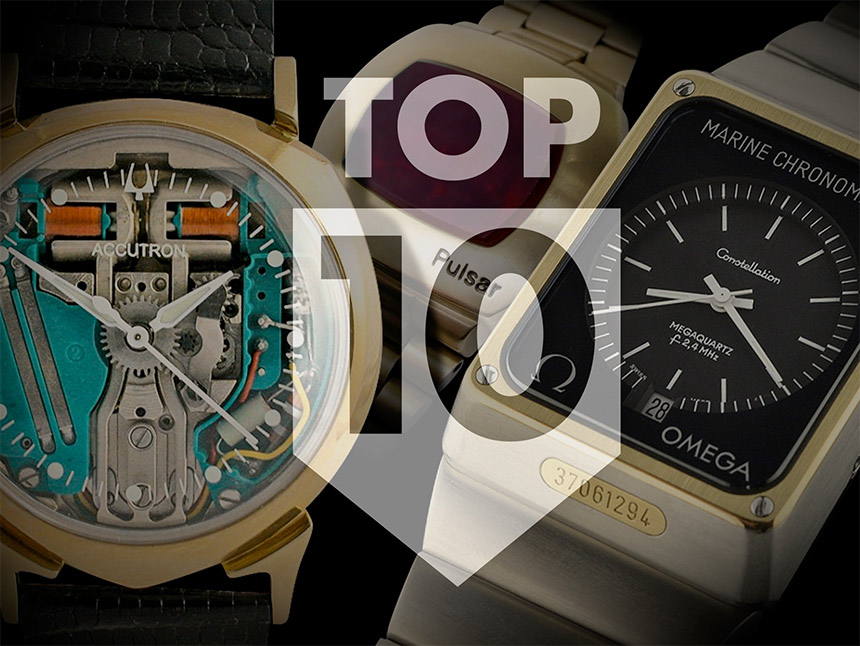
Until the 1950s, the wristwatch world was powered by springs. It wasn’t even until the 50s that automatic winding watches started to become popular, meaning that most watches were not only powered by springs but also one’s ability to wind that spring manually. It was human-powered timekeeping. Winding one’s watch was part of daily routine, as was adjusting it regularly to keep it accurate. But 1957 heralded change and the beginnings of a revolution that would fully materialize in the 1970s and 80s, and it all started with the futuristic-sounding, electric watch.
Pre-quartz watch electric timekeeping technology was crude by today’s standards, but rapid improvements helped make the battery-powered watch not only the dominate way people tell time today (don’t ruin it for mechanical watch lovers by telling them), but also set the stage for wearable computers and a whole universe of watches that managed to do things no spring could ever hope to accomplish.
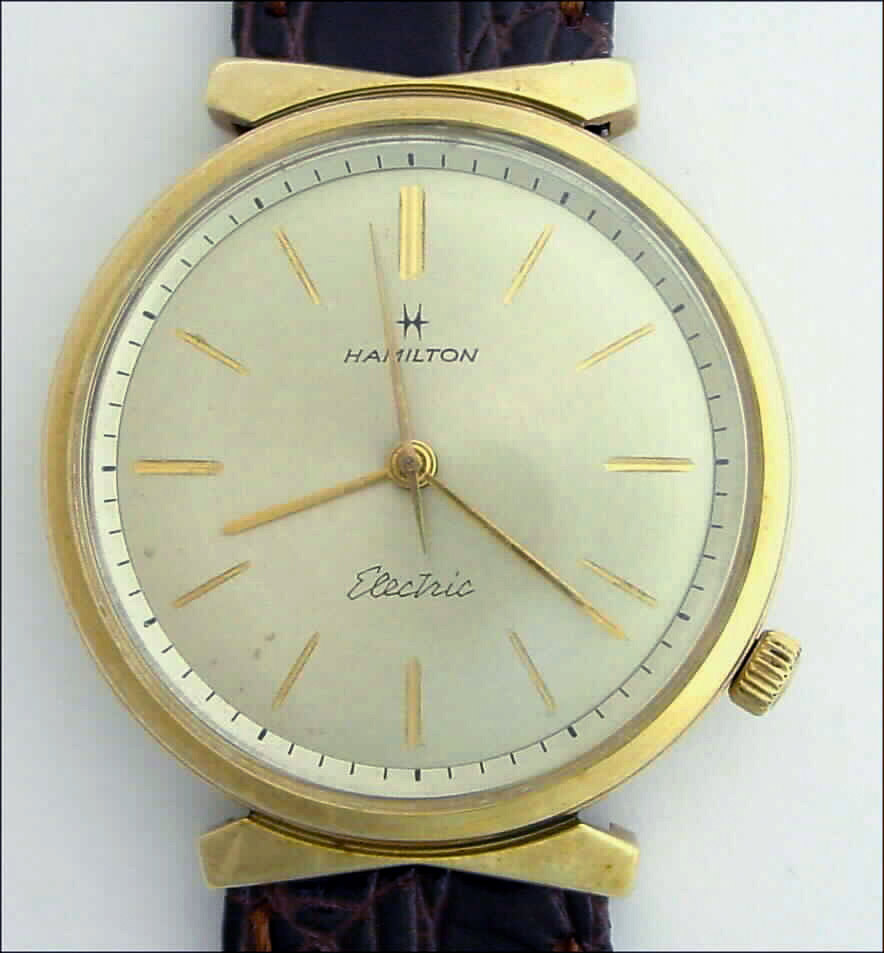
1957: The Electric Watch
A horological landmark, the electric watch was the first battery-powered watch and part of the revolution that would eventually lead to the toppling of the mechanical watch by quartz technology. These early electronic watches used a traditional balance wheel that was driven electromagnetically by a solenoid powered by a battery, and the hands were driven mechanically through a wheel train.
The production of an electric watch became a possibility thanks to the miniaturization of electronic components and the introduction of small batteries. Hamilton and Elgin both attempted to be the first to market.
Hamilton released the first one in 1957, the 500 Model. But it was rushed to market due to fears of Elgin releasing one ahead of them. Consequently, it was plagued with reliability issues from the start, which damaged its reputation. The cause was with the electrical contacts which soon wore out and were difficult to repair.
Even though a new, improved version was released in 1961 and Elvis could be seen wearing the distinctive arrow-pointed Hamilton “Ventura” model in the movie “Blue Hawaii,” Bulova had by then released their more accurate and more dependable Accutron tuning fork watch, going on to become a huge success. The Hamilton 500 was a fusion, it still contained elements from the mechanical watch such as bridges and balance wheels, it was only after all the problems they encountered that they decided to modify this hybrid approach. Nevertheless, the Ventura model went on to become an iconic watch designed by Richard Arbib with an aesthetic which complemented the watch’s very modern movement.
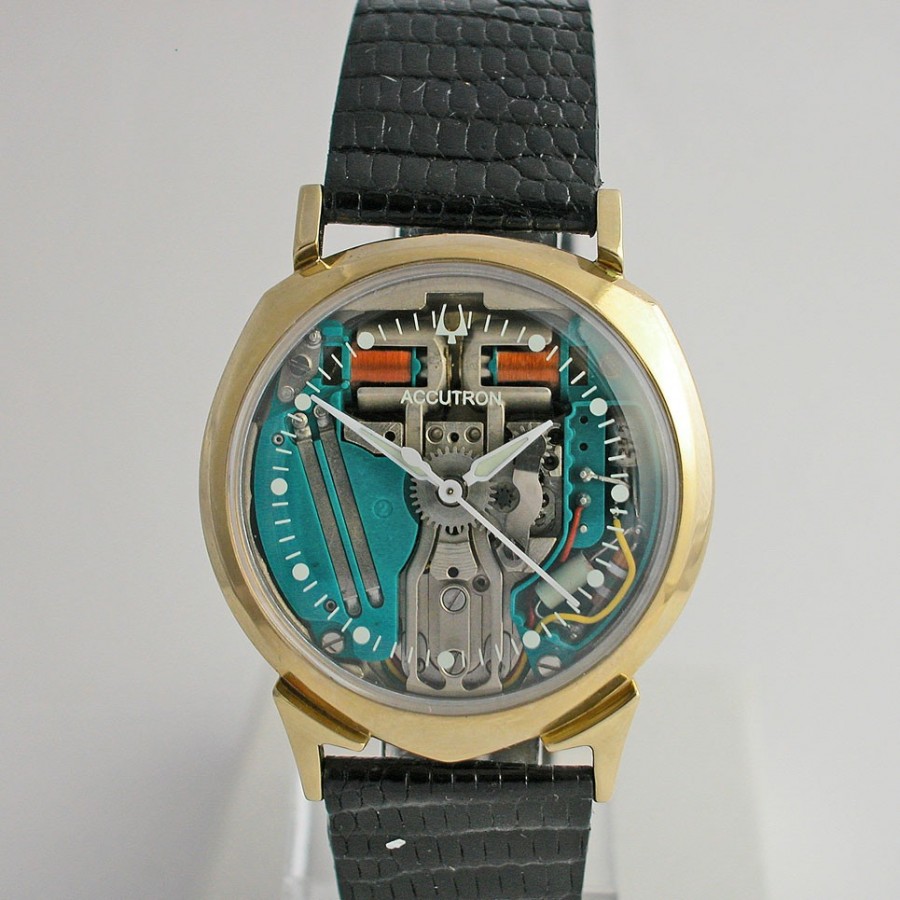
1960: The Tuning Fork Watch
Unlike any other watch seen, either battery driven or mechanical, the Accutron was driven by a tuning fork which, depending upon the model, vibrated at 360-480 times a second. At the time, the most accurate mechanical watches were about 2hz -or two beats per second. The Accutron’s higher frequency gave it an accuracy of one minute per month. Indeed, the Accutron was so precise for the time (pun intended) that it was the only watch that was accurate enough for space travel and as well precise enough for U.S railroad certification.
So confident were Bulova of the accuracy of the Accutron that they didn’t even include a setting stem on the side of the watch, but instead placed it in the back of the case.
Because of its accuracy, it was chosen for use by some of the “Original Seven” Nasa astronauts and became embroiled in a battle with Omega for the accolade of being the first watch on the moon or “Moon Watch.” A battle the Accutron ultimately lost due to not being dust-proof. The movement was, however, used in spacecraft instrument clocks and other time-keeping mechanisms, partly also because NASA was still unsure how gravity would affect mechanical movements.
The Bulova Accutron had a number of novel aspects that made them appealing to the public. Because they were powered by a tuning fork, they hummed rather than ticked and were the first to have sweeping seconds hands. “Spaceview” versions showed the highly distinctive and unusual tuning fork mechanism inside. But of course, being able to claim to be the most accurate wristwatch available, was a huge marketing advantage for them. By 1970 however, the writing was on the wall for the Accutron. Bulova did attempt to cling on a bit longer with the development of the “Accuquartz” model which combined tuning fork technology with quartz control.
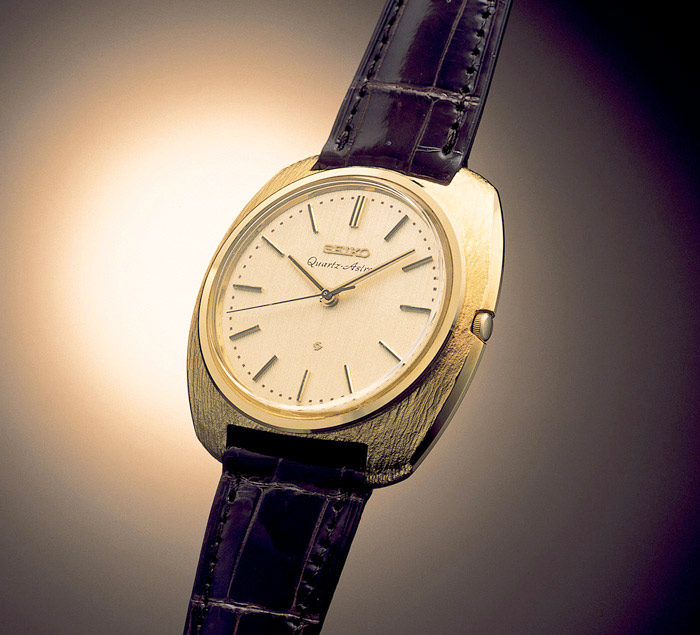
1969: The Quartz Watch
In 1927, Warren Marrison, a telecommunications engineer, was looking for reliable frequency standards at Bell Telephone Laboratories, but instead found he had invented the first quartz clock. It was based on the regular vibrations of a quartz crystal in an electrical circuit and was so large that a small truck was needed to move it. It took World War II to push quartz technology into making the long journey needed for it to be reduced down to a size usable in a wristwatch.
Military communication relied on radios, and as a result, quartz oscillators developed with more haste. Following this, a post-war interest in micro-electronics spurred on its further development. Suwa Seikosha, the early incarnation of Seiko, devoted considerable time and resources to the development of the quartz wristwatch. It served notice of its intentions and progress with a quartz timer for the 1964 Tokyo Olympics.
Meanwhile, in Switzerland, a consortium of about a half dozen brands, Rolex and Omega included, called the Centre Electronique Horloger (CEH) were working on creating an electronic movement. A prototype called “Beta 21” was produced in 1967 with a 13-jewel, 8-khz quartz module. Before a production model was produced, though, CEH changed their mind, concluding that the future didn’t lie in quartz technology and that it would be just a fad…
However, over in Japan, Seiko felt differently. In 1969, the quartz revolution was announced with the launch of the first production model, the “Astron.” Unlike more modern quartz watches, the Astron’s quartz oscillated at 8,192 cycles per second, about a quarter of what we expect nowadays. Due to its stepping motor – developed with Epson – it had a seconds hand that moved in one-second steps. Nothing special these days, but a sensation at the time. Seiko also claimed an accuracy of around one minute per month, making it the most precise watch available.
The first 100 “35 SQ” model Astrons were very expensive, costing about the same as a Toyota Corolla, 45,000 Yen or $1250 at the time, and weren’t particularly dependable with many having to be recalled. But the quartz genie was out of the bottle, and there was no going back. Today, most watches are quartz and are the most affordable and accurate watches available.
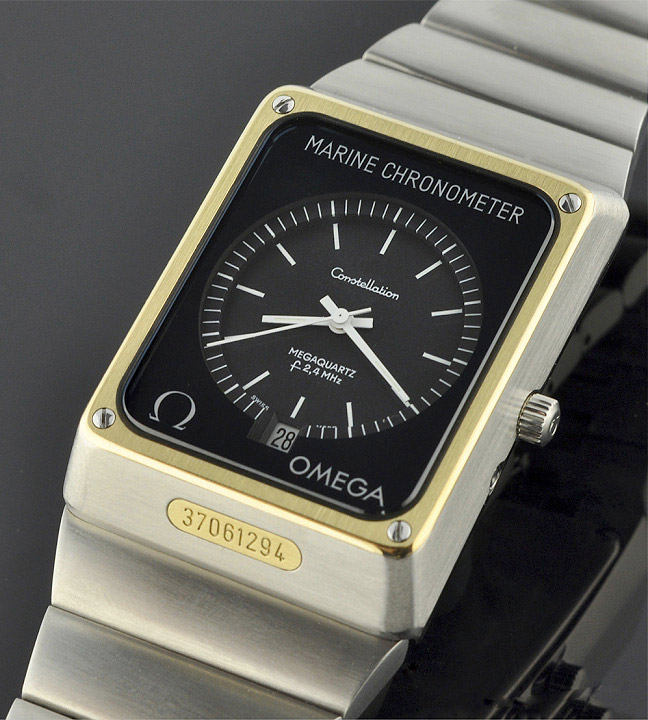
1970: The Ultra High Accuracy Quartz Watch
Today, it doesn’t make much sense to develop more precise quartz movements since they can now sync with atomic clocks – and we even have atomic clock wristwatches! But, back in the 1970s when quartz technology was still young, brands vied to produce the most accurate quartz movements. These developments affected how quartz watches evolved and also the improvement of accuracy technology.
Generally, two approaches were taken: high frequency quartz technology; and thermocompensated quartz movements with the latter becoming the more commonly used.
Omega were the first to take up the challenge for the Swiss, and presented their 2.4 Mhz high frequency quartz watch, the “Megaquartz Marine Chronometer” at the Basel fair in 1970, which then hit the shelves in 1974. The most accurate wristwatch at the time, it lost just 1 second per month and was around 10 times more accurate than the quartz watches of the day. It was also the only quartz watch ever officially certified as “Marine Chronometer.” However, Omega felt there was little practical need for a watch with such high accuracy and the line was discontinued in the late 1970s.
In 1975, Citizen released what is arguably the most accurate wristwatch ever produced. The Crystron 4 Mega used a 4Mhz frequency oscillator and was rated with a +/-3 sec per year accuracy. Like the Omega, the Crystron 4 Mega used a crystal that was thermo-insensitive, so no compensation was needed.
The disadvantages for these high frequency non-thermocompensated quartz movements were that higher frequency crystals consumed more power and the technology was expensive. Both models had a one-year battery life and the Omega retailed for nearly $2000 while the Citizen was a whopping $15,000 amid mid-seventies prices.
Rather than increasing oscillator frequency, another way of improving accuracy in a quartz movement is to combat the error caused by temperature. Rolex appears to be the first to make advancements in this area and after several years of development released their thermocompensated Oysterquartz model calibre 5035 in 1977. Rolex realized that in order to achieve superior accuracy it needed both a high frequency oscillator, combined with some way to negate the effect of temperature changes. They did this by using a thermistor to sense the ambient temperature, this data was then sent to an electronic module, which then adjusted the voltage to the quartz crystal. Although Rolex has never stated an official accuracy specification, unofficially, around 60 seconds per year was to be expected. It was one of the most exceptionally made quartz watches and was discontinued in 2004.
In 1978, Seiko responded with its “Twin Quartz” model which used digital thermocompensation. This has a subsidiary crystal oscillator that detects the temperature, then, along with a micro-processor, adjusts any timing error of the main crystal oscillator. Seiko claimed accuracy of ±5 seconds a year, but production was expensive and demand from the general public not sufficient, so they were discontinued after a few years.
These days, examples of high-end quartz watches would be the “Superquartz” models from Breitling which use upgraded ETA movements featuring thermocompensation similar to the Rolex Oysterquartz. Or, from Seiko, a current high-end movement is the 9F calibre used exclusively in the Grand Seiko line. It’s not only highly accurate, but also designed to need no maintenance for fifty years. more »
